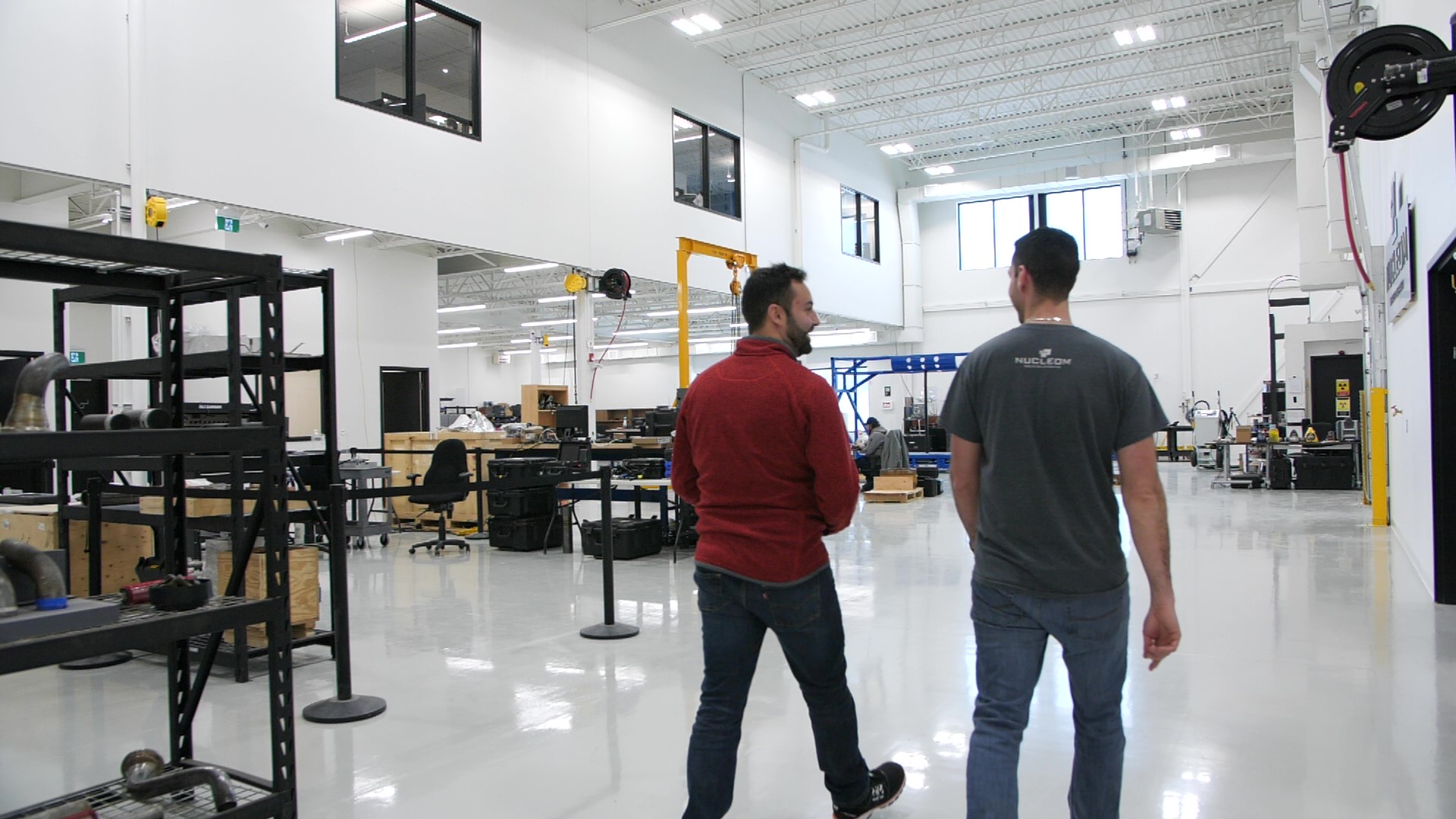PA-CAT vs QSR
In the past month, Nucleom was glad to collaborate with Paul Holloway on a comparison project between PA-CAT from Holloway Engineering & NDT and QSR from Guided Ultrasonics Ltd. Both technologies are dedicated to the detection of corrosion under pipe support (CUPS) and measurement of minimum remaining thickness (MRT).
- PA-CAT is a new technology brought by Paul using Phased Array Ultrasonic Testing (PAUT). A major advantage of the technology is that it uses the equipment from traditional PAUT inspections and adapts to a more modern process. Thus, a comparison with QSR seemed natural.
- QSR is an automated scanning system that uses Guided Wave (GW). This technology is commonly used by Nucleom’s team and provides reliable data for an effective inspection.
Two pipes were inspected with four defects, two at the top and two at the bottom. The results were also compared with measurements taken by Creaform’s Laser Scanner.
Overview
After our analyses, Nucleom was satisfied with both technologies and can confirm that they will be used according to the inspection needs. The results obtained will allow us to determine which will provide an optimized inspection solution for our customers depending on the environmental factors.
In fact, the QSR was a very good, automated solution with high repeatability, ease to set up, and proven reliability.
The PA-CAT has shown very good performance with quantitative results from 0 to 100% and very high scan resolution.
Key Points
QSR
- Measurement TOP and Bottom at the same time from one scan;
- Automated scanning;
- Thickness measurement during the calibration process;
- No preparation time.
PA-CAT
- Quantitative from 0 to 100%;
- Commonly found PAUT equipment;
- No need for additional training;
- Low longitudinal footprint;
- Affected by surface conditions.
